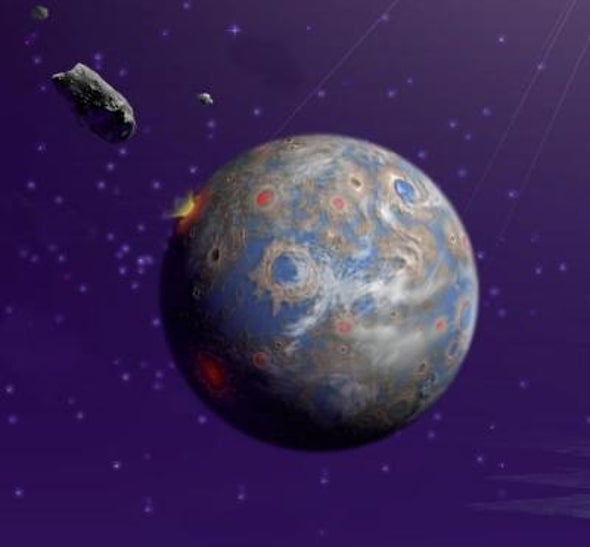This is Scientific American's 60-second Science, I'm Christopher Intagliata.
In the movie Armageddon, an asteroid the size of Texas is hurtling towards Earth. All seems lost, but then Bruce Willis sacrifices his own life to detonate a thermonuclear bomb on the asteroid. And then you hear this from mission control: "The two halves are gonna miss us by 400 miles, and most of the small particles have been vaporized!"
Breaking a rock that big into two halves, that somehow miraculously dodge the Earth? A bit of Hollywood magic. But scientists are studying what would really happen in such a scenario.
"A big part of what we do is basically looking at how things break. Smashing things together and what happens after that." Charles El Mir is a mechanical engineer who studies planetary science at Johns Hopkins University.
He and his colleagues modeled what might happen if you smashed up a 15-mile-wide asteroid, made of basalt. They started by assuming the asteroid has some tiny cracks already running through it, based on studies of real rock. Then, they struck the hypothetical space rock with another, smaller rock—just a mile wide—hurtling towards the asteroid at more than 11,000 miles per hour. When it hit, they tracked how stress waves propagated through the asteroid, and expanded the network of cracks.

Previous impact models predicted that an impact like that would completely pulverize the asteroid, basically turning it to sand. But not this new model. "What we're seeing, after the impact you have this big chunk of rock that was still held together, still not completely broken down, and this piece of rock creates its own gravitational field which attracts the particles that were ejected from it, and they start re-accumulating over it."
The scientists describe the model in the journal Icarus.
The work suggests asteroids might actually be harder to smash than we thought, meaning: "We might need to have a faster impactor, larger mass of impactor coming in, to be able to deflect it efficiently."
In 2022 NASA's Double Asteroid Redirection Test mission, or DART, will attempt to put all this knowledge to the test, by shoving a near-Earth asteroid off its path. No Bruce Willis required.
Thanks for listening for Scientific American — 60-Second Science. I'm Christopher Intagliata.













